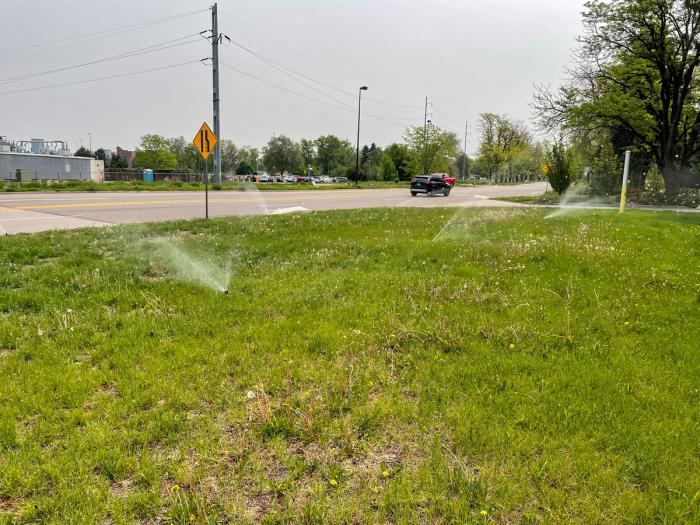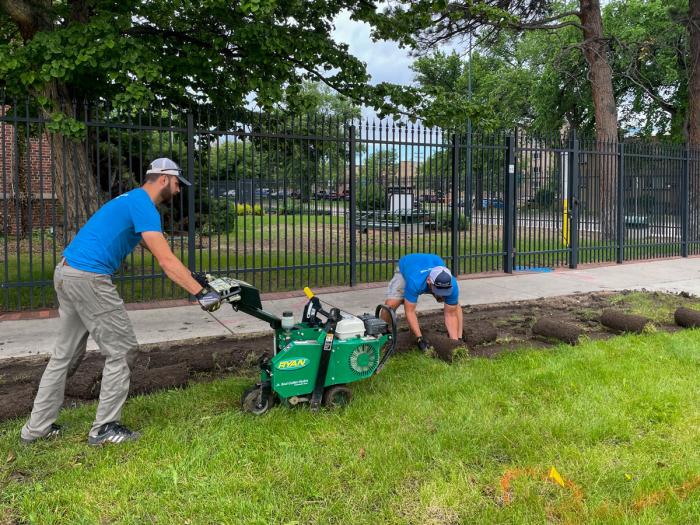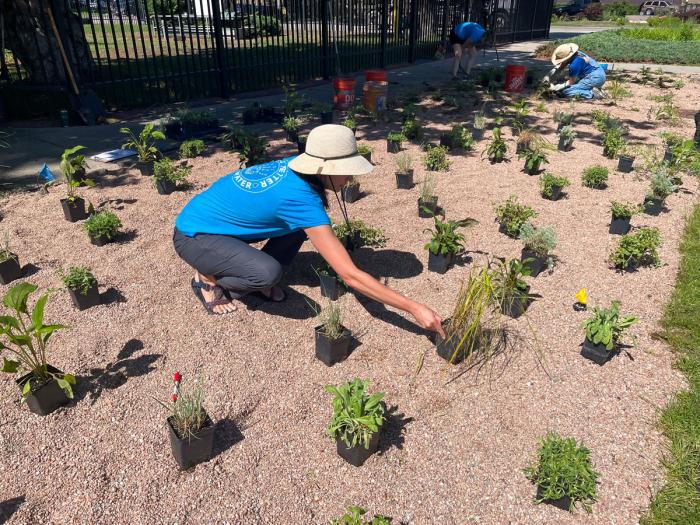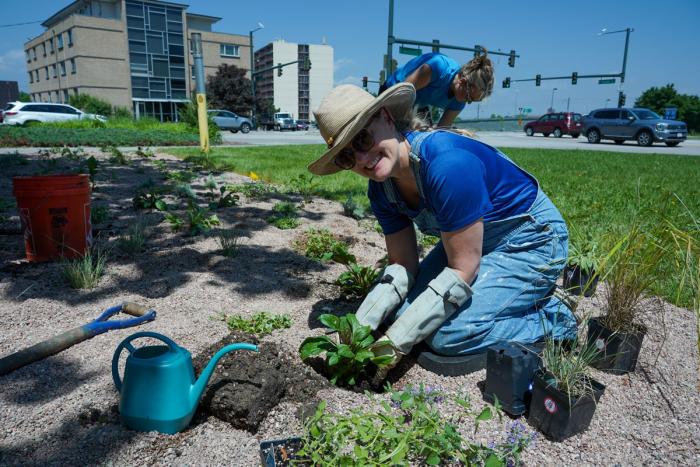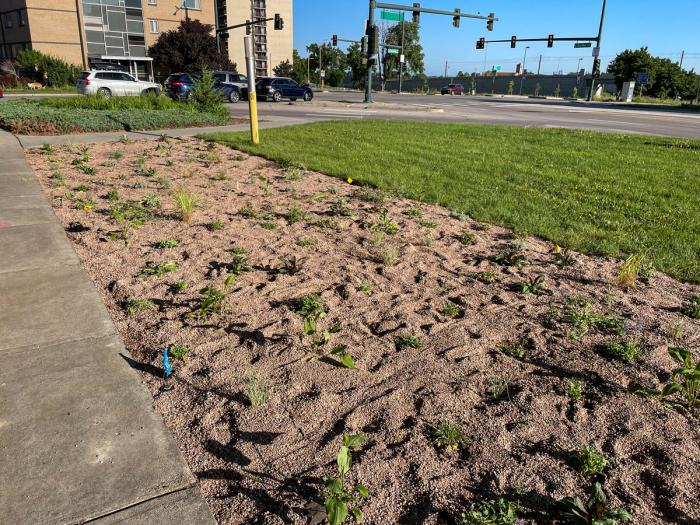Landscape transformation challenge takes root
Coneflowers, stonecrops and ice plants are just a few of the many new plants now growing in front of a Denver Water pump station near the University of Denver.
The new plants are transforming a section of decorative — and thirsty — Kentucky bluegrass into a water-wise garden that fits naturally into Colorado’s semi-arid climate.
The garden is being done with the help of a Transformative Landscape Change Challenge grant from the Colorado Water Conservation Board working with Boulder nonprofit Resource Central. The grant was awarded to Denver Water to remodel the landscape at the utility’s Einfeldt pump station at the corner of South Buchtel Boulevard and South University Boulevard.
A puddle in your lawn is just a mosquito pool party. Don’t be that neighbor.
The grant included funding for turf removal and 385 low-water-use plants that will cover about 1,250 square feet.
And that’s just the first phase of Denver Water’s plan to transform a total of about 12,000 square feet of thirsty, unused turf grass at the pump station into a diverse ColoradoScape that incorporates water-wise plants and cooling shade trees, while also offering rich habitat for the birds, pollinators and wildlife that live in the metro area.
“The goal of the challenge is to replace large areas of irrigated, nonfunctional turf grass with low-water-use plants,” said Jenna Battson, outdoor water conservation coordinator with the Colorado Water Conservation Board. “We also looked for landscapes in areas that are visible to the public and the Denver Water location was just what we were looking for, so we’re excited to see their landscape transformation.”
Denver Water was the first recipient of the CWCB’s Transformative Landscape Change Challenge grants to break ground on its renovation project. The entire project involves transitioning a total of 12,000 square feet of Kentucky bluegrass to reduce water consumption.
Subscribe to TAP, a free, weekly email newsletter dripping with tips and tricks for conserving water indoors and out.
Phase one of the project, which received a CWCB grant, will replace 1,250 square feet of grass with low-water plants. Denver Water will pay for phase two of the project, which is scheduled to happen in the fall, when the remaining 10,750 square feet of what used to be purely decorative turf grass will be seeded with native prairie grasses and wildflowers.
“The grass at the site wasn’t being used for any activities, so we call it ‘nonfunctional turf,’” said Bea Stratton, water conservation planner at Denver Water. “We’re really excited to see how it looks and hope people will stop by to check out the new garden as the plants grow.”
Stratton said once the new low-water plants in the garden are established, they will need about 7 gallons of supplemental water per square foot per year. The prairie grass will need about 6 gallons of extra water per square foot per year.
That compares to roughly 20 gallons per square foot of supplemental water per year that were needed to keep the Kentucky bluegrass green in Colorado’s summertime climate.
Join a team of people who share a passion for water, at denverwater.org/Careers.
Once the grass is removed and the new plants are established, Denver Water expects to reduce water usage at the site by nearly 166,000 gallons annually.
“There are so many different types of plants that we should be using in our landscapes that are beautiful and also use significantly less water than fields of Kentucky bluegrass,” said Tori Petersen, senior water programs manager at Resource Central. “Low-water plants also add curb appeal, attract pollinators and are low maintenance.”
The project is just one example of a regional effort across several large and small water utilities across the West that use water from the drought-stricken Colorado River. The utilities have signed onto a commitment to substantially expand existing efforts to conserve water, reduce demands and expand reuse and recycling of water supplies.
One of the utilities’ goals is to reduce the amount of nonfunctional turf by 30% within their service areas to conserve water.
Denver Water gets around half of its water supply from rivers and streams that feed into the Colorado River.
“Over the past two decades there’s been a lot of focus on indoor water savings, and now we’re ramping up our outdoor water conservation efforts,” said Austin Krcmarik, water conservation lead planner at Denver Water.
“ColoradoScaping means using water-wise plants and shade trees that fit naturally into our semi-arid climate. While this project involves a relatively small section of nonfunctional grass, by doing projects like this across the city we’ll see significant water savings over time and have a landscape across the city that will thrive as our climate gets warmer in the future.”


